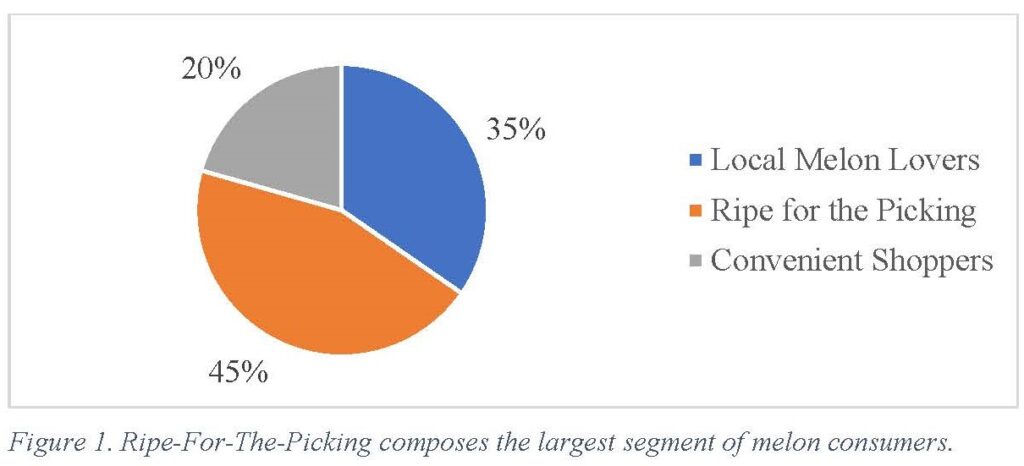The average American eats almost 9 pounds of cantaloupe and 2 pounds of honeydew each year (Agricultural Marketing Resource Center, 2018). An increased melon consumption is mainly explained by consumer awareness of melon health benefits, year-round availability, creative marketing strategies, and improved cultivars. To address these economic opportunities, retailers, growers, and other industry stakeholders should have a clear understanding of the different market segments of melon consumers, and how individuals in these segments value diverse attributes of melons. This information can help industry stakeholders introduce new cultivars, increase melon sales and consumption, and convey key attributes and benefits to consumers.
This publication uses data from a study published by researchers from Purdue University and Michigan State University titled Characterizing the U.S. Melon Market (Torres et al., 2020). For more information, you can access the article cited below. Using a cluster analysis, the study reported on 3 melon consumer segments and profiled those groups to help academics, farmers, and retailers better serve consumers.
The 3 segments of melon consumers
Americans can be comprised in 3 clusters (market segments) of melon consumers. Cluster 1 (“Local Melon Lovers”) comprised 34.6% of the sample (N=595), while Cluster 2 (“Ripe-For-The-Picking”) included 44.7% of the sample (N=354), and Cluster 3 (“Convenient shoppers”) composed 20.6% of the sample (N=769). Figure 1 illustrates the distribution of the clusters based on their consumer profile. As seen in Figure 1, the largest cluster corresponds to the “Ripe-For-The-Picking” type of consumer, followed by “Local Melon Lovers”, and lastly by “Convenient shoppers”.
Local Melon Lovers would be the best target for new melon cultivars because of their high level of consumption and positive attitudes towards melons in their diet. Consumers in this segment tend to be younger and have more children than in the other two segments. Local Melon Lovers were paying more for melons, preferred purchases in local markets (e.g. farmers markets) and tend to have a vast knowledge of melons. Marketing campaigns targeting this group should focus on the health and experience attributes of melons.
Ripe-For-The-Picking consumers placed halfway between Local Melon Lovers and Convenient Shoppers Clusters indicate the importance to generate marketing messages and labels to appeal to this segment. Given their demographic and consumption characteristics, Ripe-For-The-Picking consumers seem to be the target of marketing and advertising campaigns aiming to increase the market share of melons. For example, generating social media campaigns that target white/Caucasian consumers located in the Midwest can improve the reach of melon retailers to convert Ripe-For-The-Picking into Local Melon Lovers. Marketing efforts should highlight the importance of buying local and information regarding the health and nutrition of melons.
Literature cited
Torres, A., Langenhoven, P., & Behe, B. K. (2020). Characterizing the US Melon Market. HortScience, (556), 795-803.
This article was also published at https://www.purdue.edu/hla/sites/hortbusiness/publications/extensionpublications/
